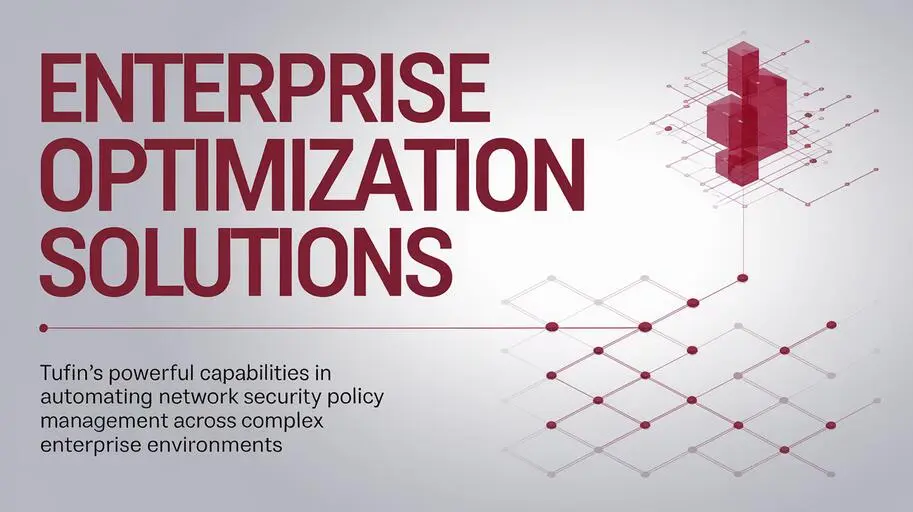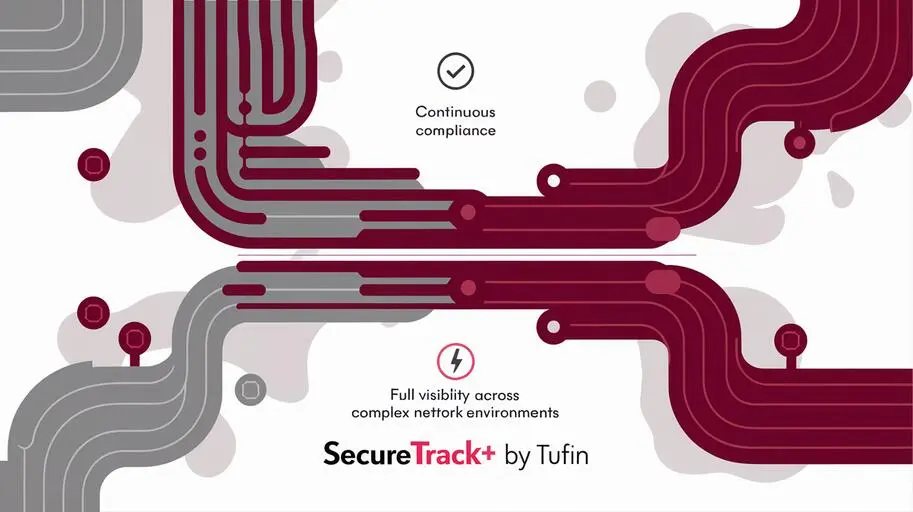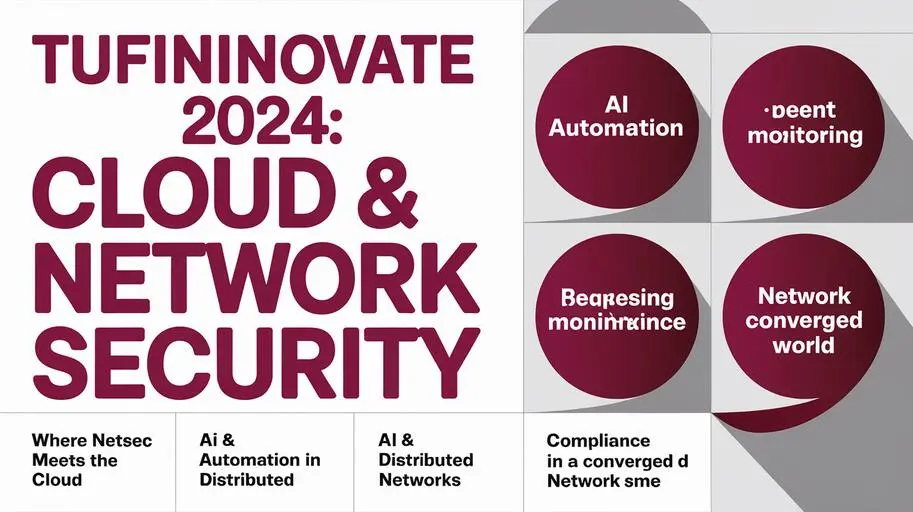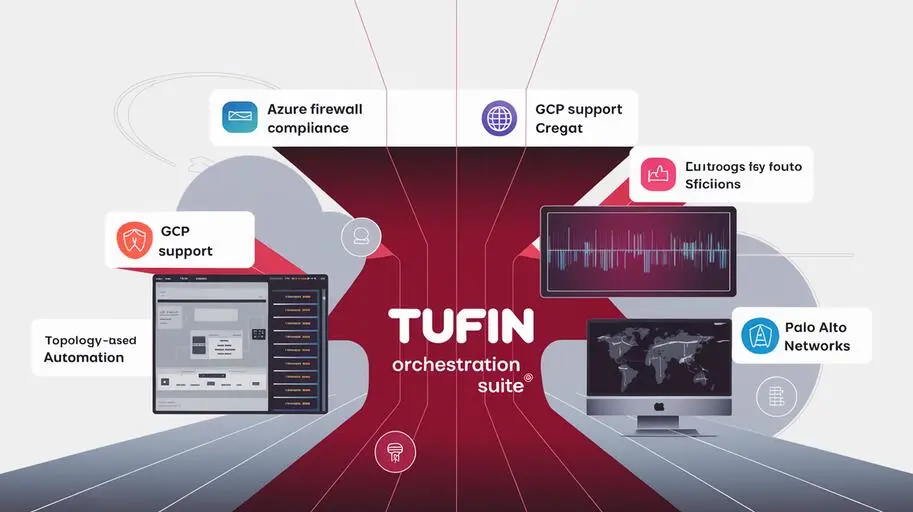
In today’s dynamic world, where cyber threats are becoming increasingly sophisticated, and business demands for the speed and flexibility of IT infrastructure are constantly growing, manual management of complex network infrastructure is becoming an unaffordable luxury. Errors, delays, inconsistency of security policies – all this can lead to serious consequences: from downtime and data leaks to financial losses and reputational damage. Fortunately, there are solutions that allow you to automate the process of making changes to the network, while ensuring a high level of security and compliance with regulatory requirements. One such solution is Tufin – a platform that provides full automation of security policy management and network changes. For example, Tufin can reduce the time for a PCI DSS audit from several weeks to several days or speed up the time to market for new applications by automating changes to security policies. Next, we will look at how Tufin helps organizations cope with the challenges of the modern network environment.
Why is network security management automation necessary?
Manual management of security policies and network changes is not only a slow and time-consuming process, but also a source of potential errors and risks. Consider the main problems faced by organizations that do not use automation:
- Human factor: Errors in manual firewall and other network device configuration are inevitable, especially in conditions of high load and shortage of qualified specialists. This leads not only to configuration errors, but also to a decrease in overall network performance.
- Delays: The process of making changes to the network can take days or even weeks, which is critical for maintaining business flexibility and quickly responding to emerging threats.
- Policy Inconsistency: Manual management of security policies can lead to inconsistency and contradictions, creating vulnerabilities in the network.
- Audit Complexity: Tracking and auditing manually made changes is extremely difficult, which complicates ensuring compliance with regulatory requirements.
- Scalability: Manual management becomes almost impossible when the network scales up and the number of network devices increases, which negatively affects network performance and increases the risk of configuration errors.
In contrast, automating network changes allows you to:
-
- Reduce the time to make changes from days to minutes.
- Minimize the risk of errors associated with the human factor.
- Ensure consistency of security policies at all levels of the network.
- Simplify auditing and ensure compliance with regulatory requirements.
- Improve overall network security.
- Effectively manage a network of any size.
Tufin Solution: How does it work?
Tufin is a comprehensive platform that provides automatic change orchestration in the network, network security policy management and automated risk analysis. The solution architecture is based on three key components that interact with each other through APIs to automate workflow.
Tufin Orchestration Suite
This is the main component of the platform, providing centralized management of security policies and workflow automation for changes. Tufin Orchestration Suite includes the following modules:
-
-
- SecureTrack: Provides monitoring and analysis of firewall, router and other network equipment configurations, identifies vulnerabilities and inconsistencies with security policies. SecureTrack can identify rules that allow access to critical ports, outdated software versions, and other vulnerabilities. It generates compliance reports, risk analysis, and configuration changes.
- SecureChange: Automates the process of making changes to the network, from change request to implementation and validation. SecureChange integrates with ITSM systems (e.g., ServiceNow, Jira) to manage change requests. Example workflow: request -> automatic risk check -> approval -> automatic implementation -> validation.
- SecureApp: Provides security policy management at the application level, allowing you to define and control access to applications and data. SecureApp defines an “application” based on tags, metadata, traffic analysis. It detects changes in applications and adapts security policies.
-
Topology-Aware Security Policy
The network topology analysis engine underlying Tufin allows you to take into account the features of the network infrastructure when defining security policies and making changes. This avoids errors associated with incorrect equipment configuration or misunderstanding of network connections. Tufin obtains network topology information using discovery protocols (LLDP, CDP), traffic analysis, or integration with network management systems. It represents the topology as graphs. This “engine” helps avoid errors by automatically determining which devices will be affected by the change and how it will affect network security.
Unified Security Policy
The consolidated security policy created using Tufin provides a unified approach to security management at all levels of the network. It defines rules and standards that all network devices and applications must comply with, ensuring security policy consistency and simplifying auditing and compliance with regulatory requirements. Example security policy: “All servers containing personal data must only be accessible from specific IP addresses and only via HTTPS.” This policy is applied to various devices and applications through the unified Tufin interface.
Key features and benefits of using Tufin
The Tufin platform offers a wide range of features that allow organizations to significantly improve network security management and optimize change management processes. Let’s consider the main advantages of implementing Tufin:
Automation of network changes
-
-
- Workflow automation: Tufin provides flexible and customizable workflows to automate the process of making changes to the network, from change request to implementation and validation. For example, a developer requests to open port 8080 for a new application -> SecureChange automatically checks whether this violates PCI DSS security policies -> The security service approves the request -> SecureChange automatically configures Check Point and Cisco firewalls -> SecureTrack verifies that the changes were made correctly.
- Change Orchestration: Tufin automatically orchestrates changes across various network devices, ensuring consistency and minimizing the risk of errors. For example, to open port 443 for a web server, Tufin automatically creates a rule on the Check Point firewall, configures routing on the Cisco router, and updates access rules in the AWS cloud environment.
- Change Validation: Tufin automatically checks whether the changes made comply with security policies and whether they create new vulnerabilities. Automatic change validation in Tufin. Tufin checks not only the configuration syntax, but also performs more complex checks, such as traffic modeling or vulnerability testing.
-
Network Security Visibility and Control
-
-
- Configuration Monitoring: Tufin constantly monitors the configurations of firewalls, routers and other network equipment, identifying inconsistencies with security policies and other problems. Tufin polls devices at configurable intervals. If Tufin detects a policy violation, it generates an alert and provides recommendations for resolving the issue.
- Risk Analysis: Tufin automatically analyzes network risks, identifies potential vulnerabilities, and provides recommendations for addressing them. Tufin analyzes risks based on a vulnerability database, traffic analysis, and device configurations.
- Audit and Compliance: Tufin simplifies auditing and ensures compliance with regulatory requirements by providing detailed reports on network changes and its security posture. Tufin generates reports for compliance with various standards (e.g., PCI DSS, HIPAA, GDPR).
-

Integration with various vendors and technologies
-
-
- Broad vendor support: Tufin supports Cisco, Juniper, Check Point, Fortinet, and many other leading network equipment vendors. A complete list of supported devices can be found on the Tufin website.
- API Integration: The Tufin API allows you to integrate the platform with other IT infrastructure management systems, such as incident management systems, monitoring systems, and configuration management systems. Integration with a SIEM system allows Tufin to automatically block IP addresses from which suspicious traffic originates.
- Cloud Integration: Tufin supports integration with cloud platforms such as Amazon Web Services (AWS) (Security Groups, CloudWatch), Microsoft Azure (Network Security Groups, Azure Monitor), and Google Cloud Platform (GCP) (Cloud Armor, Cloud Logging), providing security management for hybrid and multi-cloud environments.
-
How Tufin Helps Manage Firewalls
Firewalls are a key element in protecting the corporate network from external threats. Managing firewall rules manually is a complex and time-consuming task, especially in large and dynamic networks. Tufin allows you to automate the processes of managing firewalls, significantly increasing their efficiency and reducing the risk of errors.
Automatic Security Policy Generation
Tufin can automatically generate security policies based on traffic analysis and security requirements. Tufin generates policies based on templates, best practices, and traffic analysis. The user can configure the generation process, defining priorities, exceptions, and other parameters. This significantly reduces the time required to configure firewalls and minimizes the risk of errors associated with the human factor.
Firewall Rule Analysis and Optimization
Tufin allows you to analyze existing firewall rules, identify unused, redundant, and contradictory rules. Tufin uses metrics such as the number of uses, rule age, and the number of allowed services to analyze rules. It provides optimization recommendations, such as deleting unused rules, consolidating redundant rules, and tightening rules that provide excessive permissions. This allows you to optimize the firewall configuration, improve its performance, and reduce the risk of errors.
Automatic Changes to Firewall Rules
Tufin allows you to automate the process of making changes to firewall rules, from change request to implementation and validation. Tufin handles conflicts between rules using a mechanism of priorities and conflict resolution rules. There is a rollback mechanism that allows you to return to the previous configuration in case of problems. This significantly reduces the time required to make changes and minimizes the risk of errors.
Practical examples of using Tufin
Let’s consider a few practical examples of using Tufin to solve specific problems:
-
-
- Network Microsegmentation: Tufin allows you to automate the process of network segmentation, dividing it into isolated segments to increase the level of security. Tufin defines network segments using tags, VLANs, or other methods. It automates the creation of rules for each segment, ensuring traffic control between segments.
- Regulatory Compliance: Tufin helps organizations comply with regulatory requirements such as PCI DSS, HIPAA, and GDPR by providing detailed reports on network changes and its security posture. Tufin generates reports on compliance with PCI DSS requirements (e.g., a report on firewall rule configuration), HIPAA (e.g., a report on access to patient personal data), and GDPR (e.g., a report on access to EU citizens’ personal data).
- Security Incident Response: Tufin allows you to quickly respond to security incidents by automatically blocking suspicious traffic and isolating compromised systems. Tufin identifies “suspicious traffic” based on integration with intrusion detection systems (IDS). It can automatically take actions such as blocking an IP address, isolating a system, and sending a notification to the administrator.
-
Scalability and Fault Tolerance
The Tufin solution was developed taking into account the requirements for scalability and fault tolerance. The platform can be deployed both in a traditional IT infrastructure and in a cloud environment, and is capable of processing large amounts of data and supporting high loads. To ensure fault tolerance, Tufin supports a cluster configuration, which allows you to ensure continuous operation of the platform even in the event of a failure of one of the servers. In the Tufin cluster, data is replicated between nodes. In case of failure of one of the nodes, traffic is automatically redirected to other nodes. Infrastructure requirements for ensuring high availability include having sufficient resources (CPU, RAM, disk space) on each cluster node, as well as using a reliable network infrastructure.
Tufin API: Expanding Automation Capabilities
The Tufin API provides broad capabilities for automating network security management processes and integrating Tufin with other systems. With the Tufin API, you can automate tasks such as:
-
-
- Requesting changes to firewall rules.
- Obtaining information about network status and security policies.
- Automatically deploying new network devices.
- Integrating with SIEM systems for automatic security incident response.
-
Using the Tufin API allows organizations to significantly increase the efficiency of network security management and optimize their business processes.
In conclusion, Tufin is a powerful and flexible solution that allows organizations to automate the process of making changes to the network, improve network security management, and reduce security risks. Network process automation with Tufin not only frees up IT resources, but also significantly improves the level of security and compliance with regulatory requirements, which is especially important in today’s cyber threat landscape. Tufin is becoming an indispensable tool for organizations striving for efficient and secure management of their network infrastructure.
Contact us for a personalized consultation, demonstration, or quote.
FAQs on: Automating Network Changes with Tufin
-
Why is network security management automation so important?
Automating network security management helps avoid human error, reduce change implementation time, ensure consistent security policies, simplify auditing, and effectively manage networks of any size. Manual management, on the other hand, leads to delays, inconsistencies, and scaling difficulties. -
What is Tufin and how does it work?
Tufin is a comprehensive platform for automated network change orchestration, network security policy management, and automated risk analysis. The solution architecture is based on three key components: Tufin Orchestration Suite, Topology-Aware Security Policy, and Unified Security Policy. -
What are the main modules included in the Tufin Orchestration Suite?
The Tufin Orchestration Suite includes SecureTrack (monitoring and configuration analysis), SecureChange (automating the change implementation process), and SecureApp (managing security policies at the application level). -
What benefits does automating network changes with Tufin provide?
Automating network changes with Tufin reduces change implementation time, minimizes the risk of errors, ensures consistent security policies, simplifies auditing, and effectively manages networks of any size. -
How does Tufin help in managing firewalls?
Tufin automates firewall management processes, allowing for automatic generation of security policies, analysis and optimization of firewall rules, and automation of the process of making changes to rules. -
With what network equipment does Tufin integrate?
Tufin supports integration with network equipment from Cisco, Juniper, Check Point, Fortinet, and many other leading vendors. Integration with cloud platforms such as AWS, Azure, and GCP is also possible. -
What is the Tufin API and what capabilities does it provide?
The Tufin API provides extensive capabilities for automating network security management processes and integrating Tufin with other systems, such as incident management systems and SIEM systems. -
How does Tufin ensure scalability and fault tolerance?
The Tufin solution was developed taking into account the requirements for scalability and fault tolerance. The platform supports a clustered configuration to ensure continuous operation even in the event of a failure of one of the servers. -
What regulatory requirements does Tufin help comply with?
Tufin helps organizations comply with regulatory requirements such as PCI DSS, HIPAA, and GDPR by providing detailed reports on changes in the network and its security posture. -
What practical examples of Tufin usage can be given?
Tufin can be used for network microsegmentation, regulatory compliance, and rapid response to security incidents.




